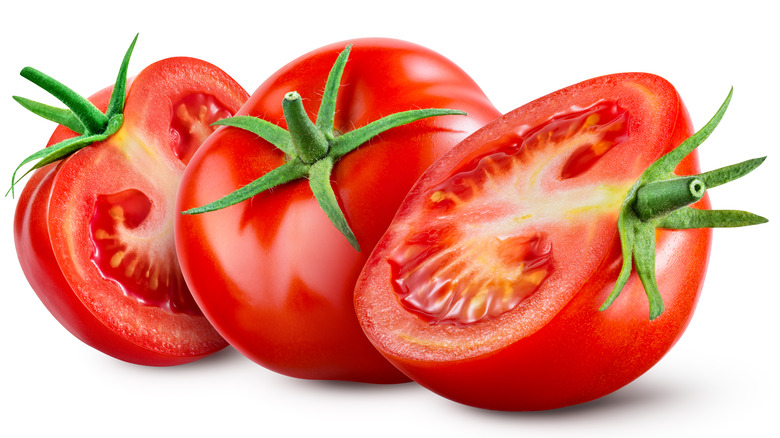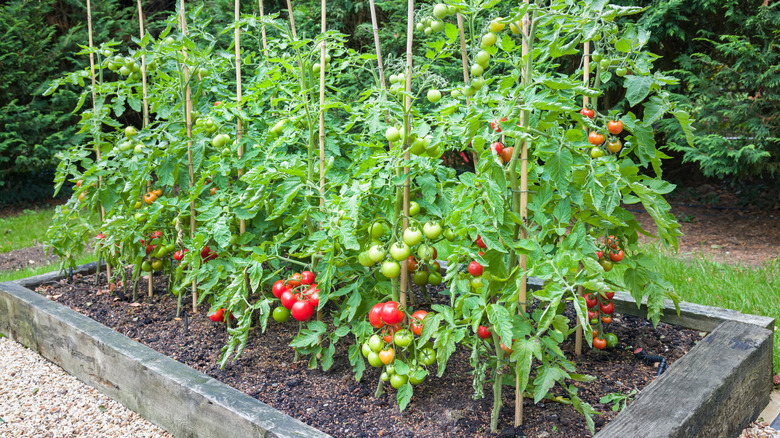The Wild Story Behind The Salem Tomato Trial
Almost everyone knows about the notorious Salem witch trials of Massachusetts. According to Smithsonian Magazine, more than 200 people were accused of practicing witchcraft between 1692 and 1693. Ultimately, 20 people were executed during this brief time period that left a dark stain on American History.
But what about the Salem tomato trial... not sure about that one? It occurred in Salem, New Jersey, in the 19th century (via All That's Interesting). However, its history is rooted long before that. Tomatoes were a staple in Aztec cuisine (per The Vintage News). When Spanish conquistadors returned to their homeland from Mexico and Mesoamerica, they brought tomato seeds with them.
Although they did know that they were edible, tomatoes were not grown for consumption. They were used as decor, and their beauty was greatly appreciated in European gardens. By the late 1700s, the sentiment regarding tomatoes changed. Per The Fact Site, their crimson color became associated with danger and sin. People began to fear tomatoes, and their reputation was tarnished.
Tomatoes were thought to be poisonous
Nicknamed "the poison apple," tomatoes were considered deadly (per Smithsonian Magazine). It later turned out that the pewter plates of the wealthy had high amounts of lead that the acidity in tomatoes brought out. Of course, no one realized this at the time, but nonetheless, the deed was done.
According to The Vintage News, doctors warned against eating them and made claims against their supposedly ill effects. Likewise, John Gerard, a barber and surgeon, did further damage. He believed them to be poisonous due to a toxin called tomatine (via The Fact Site).
In truth, tomatoes do have this toxin, but not enough to harm humans. Regardless, people refused to eat the now-beloved red fruit. That is, until Colonel Robert Gibbon Johnson came along.
Johnson did not believe tomatoes were poisonous. So much so that he had been eating them regularly. He had brought the fruit home after being abroad and held yearly competitions on who could grow the largest tomato. The townspeople, however, still saw the tomato as strictly ornamental and thought him to be crazy.
To prove his point, Johnson stood before a crowd outside the Salem courthouse on September 25, 1820, and proceeded to eat an entire basket of tomatoes (per All That's Interesting). He did not die, did not bleed, nothing happened, except that Johnson enjoyed himself. The Salem tomato trial was dismissed. The tomato quickly became a culinary staple in New Jersey, and eventually the United States, all thanks to Johnson's bravery.

